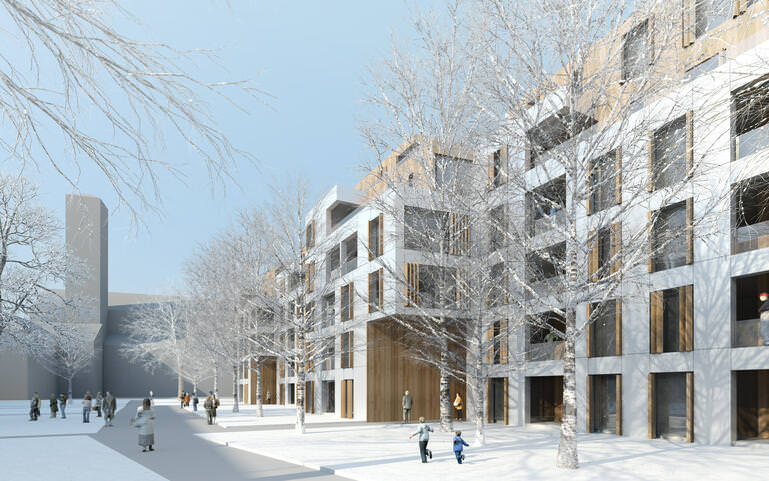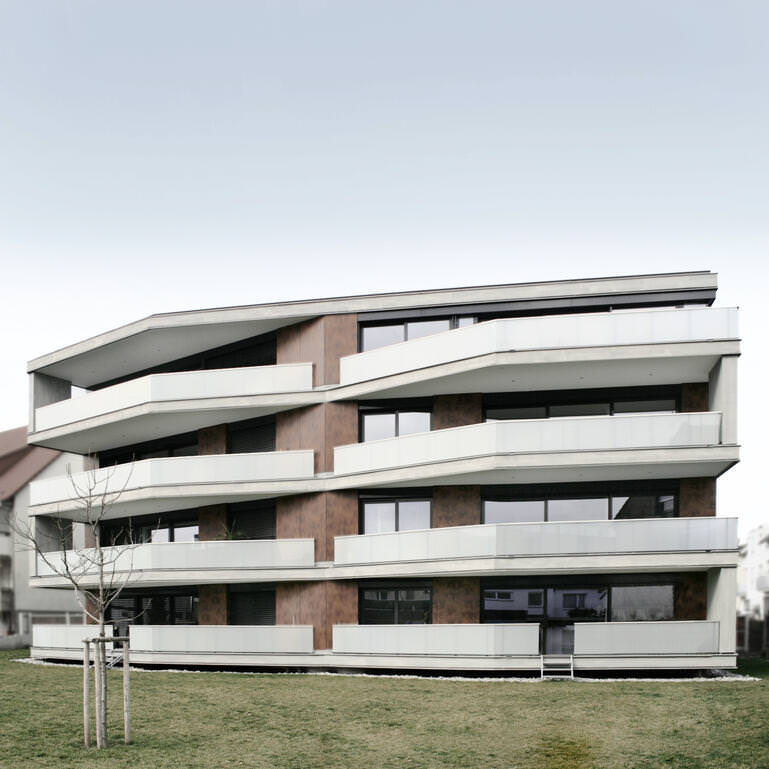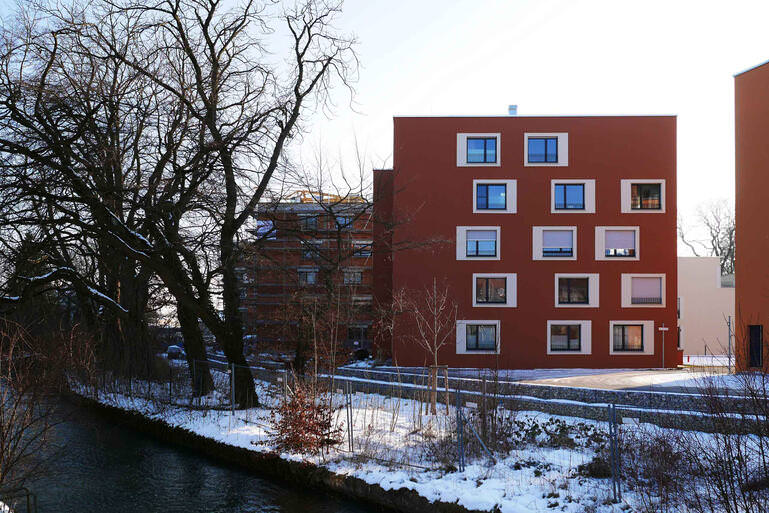Community Housing for Refugees
House at the park, Tübingen
In a prime location in Tübingen am Neckar, the housing project of the private building group Wolle+ is testing new strategies and housing concepts for the integration of people from different living and income situations, social milieus and cultural backgrounds. As a socially oriented housing project, Wolle+, which was significantly co-developed by the housing sociologist Dr. Gerd Kuhn, will react directly to the housing needs and social-communicative requirements of refugees, but will also pursue the adaptive concept of “Living for All”.
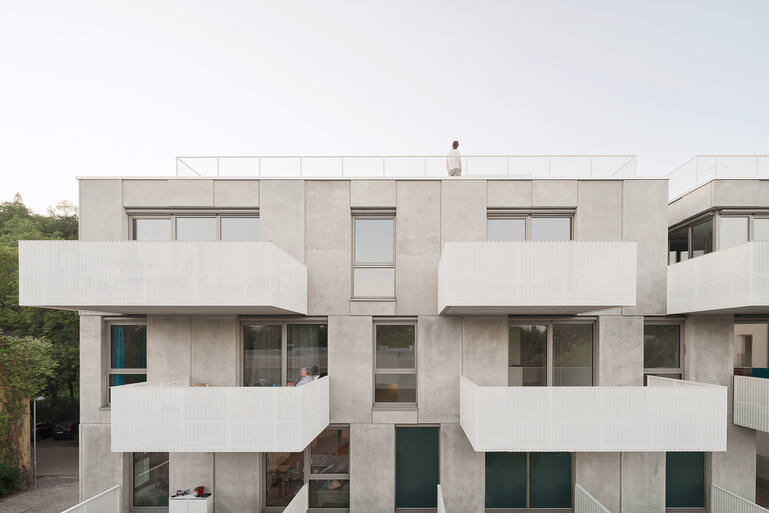



The entire complex consists of the Haus am Park and the cube in front of it. With twelve different residential units, the Haus am Park forms the residential focal point, while the cube with an open neighbourhood centre on the ground floor also involves the residents and thus creates added value for the neighbourhood. It is complemented by a cluster residential community for single parents on the upper floor.
The diversity of different users and players is also reflected in the planning team: SOMAA and Yonder are jointly developing the Haus am Park, while Simon Maier from Tübingen is responsible for the cube.
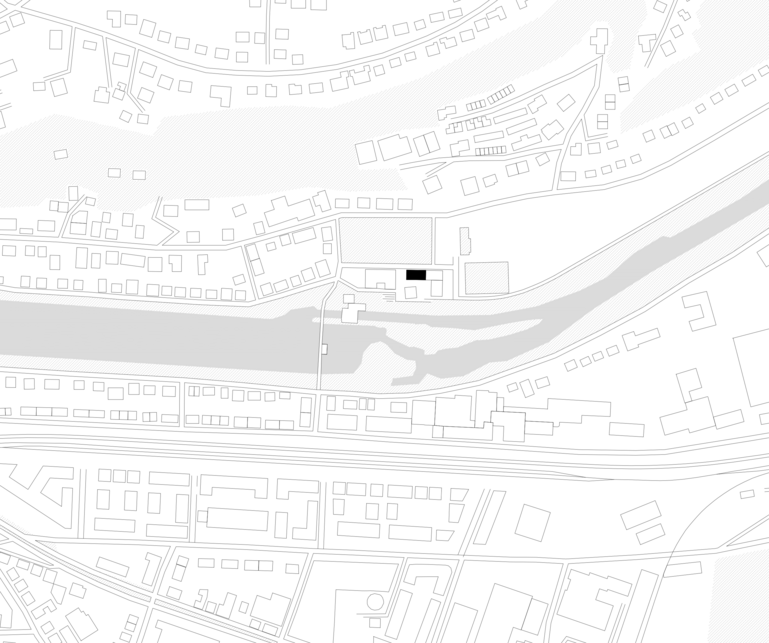
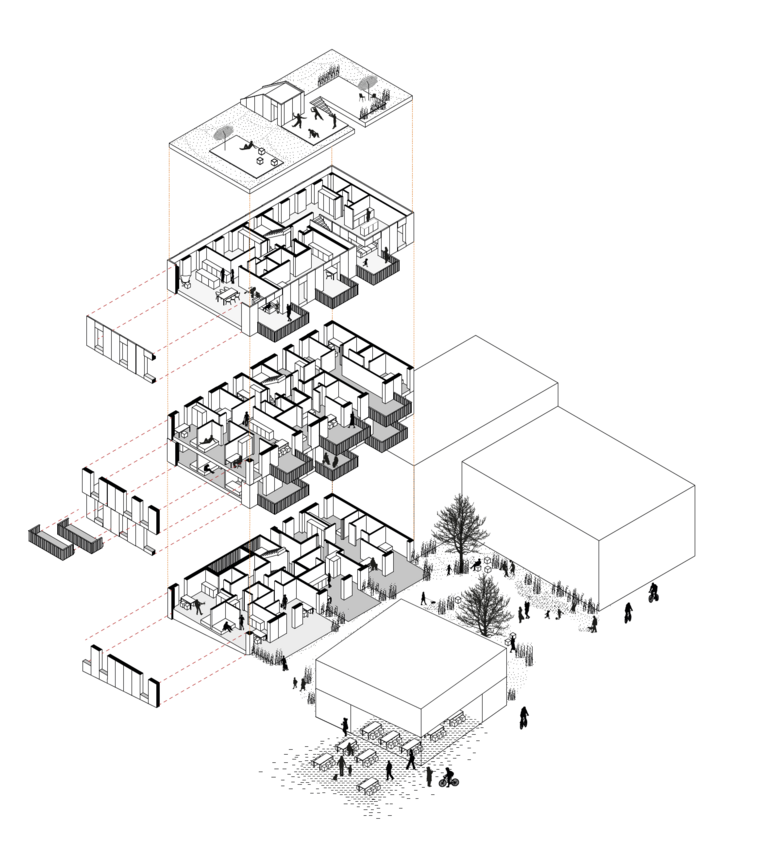
From the very beginning, the Haus am Park aims for a maximum mix of different types of housing: Self-user apartments on the penthouse floor, living space for refugees on the other floors, as well as micro-housing units for unaccompanied, underage refugees on the ground floor, which are looked after by the Martin Bonhoeffer Houses, the whole organised as a group of different private individuals.
As planned, some of the apartments initially used by refugees will be transferred to owner-occupancy after ten years, while others will remain in the social bond for another five to ten years. In return, the city of Tübingen granted prices below the heated market situation when selling the municipal land. The ambitious social agenda of the project as a whole was decisive for the award of the contract to the Wolle+ building group in the tendering procedure, which as usual was held by the city as a concept procedure.
The load-bearing elements are reduced to a minimum in the robust basic architectural structure. With its versatile floor plans and residential uses, it thus enables adaptation to changing living requirements and thus creates long-term sustainability. An apartment for refugees with up to 6 rooms can be turned into an open loft, the micro-apartments can be connected to form a student flat.
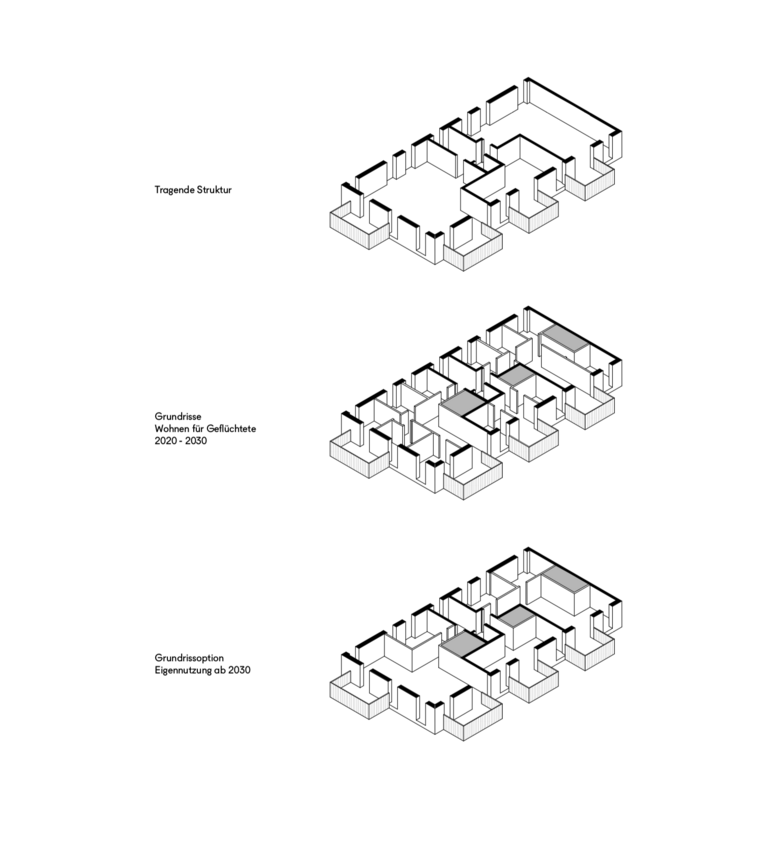
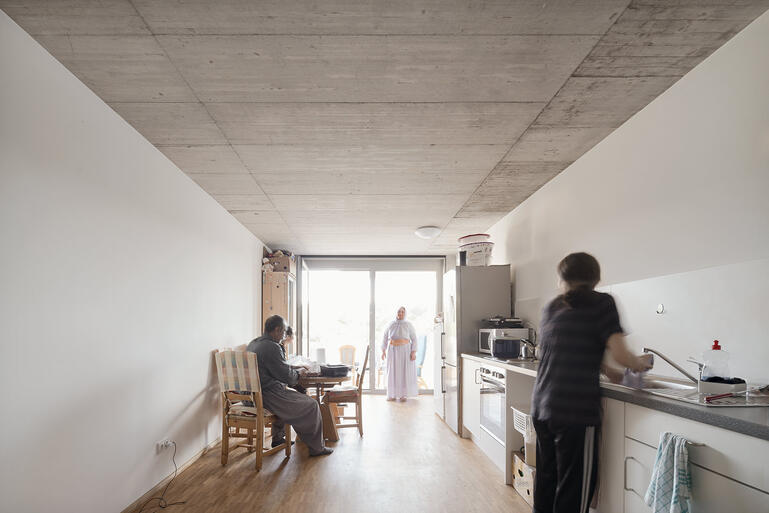
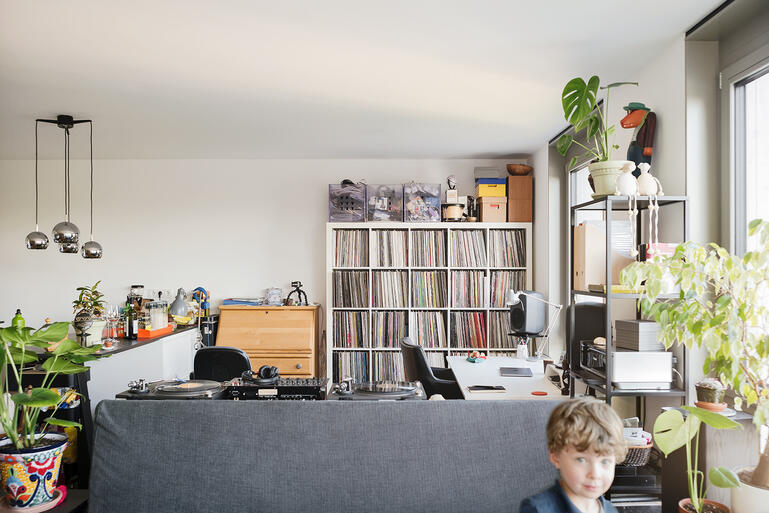
“The common living of refugees and Tübingen citizens under a roof is achieved by the everyday occurrences and therefore contributes to the successful integration of the New arrivals.”
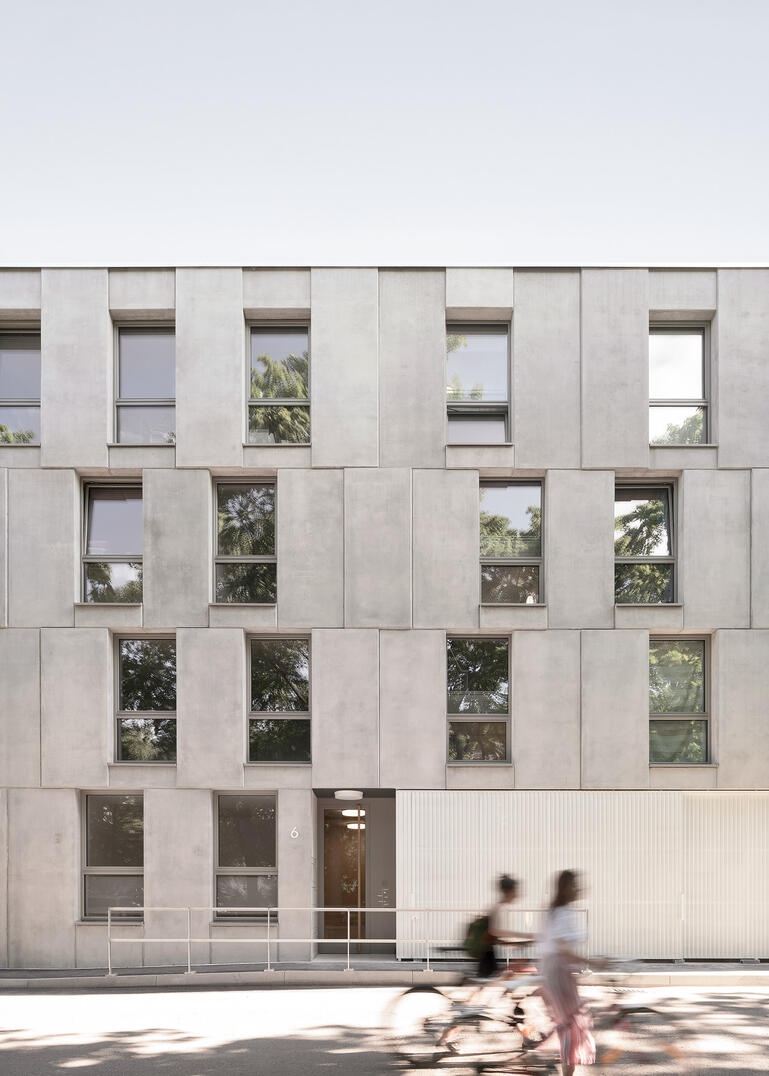
The outer wall of core-insulated prefabricated concrete parts is the primary load-bearing component. Its elementary position in the tectonics of the building is expressed by the regular back and forth movement of the uniform concrete formats and their floor-by-floor offset in the façade, analogous to a masonry bond. Through the formal emphasis of the structure, it is both construction and cladding. Rhythmically set windows fit into the grid.
The formal strictness, the concentration on selected spatial elements and the reduction to a few different materials create a spatial quality and value that benefits all users equally, even within the tight budget.
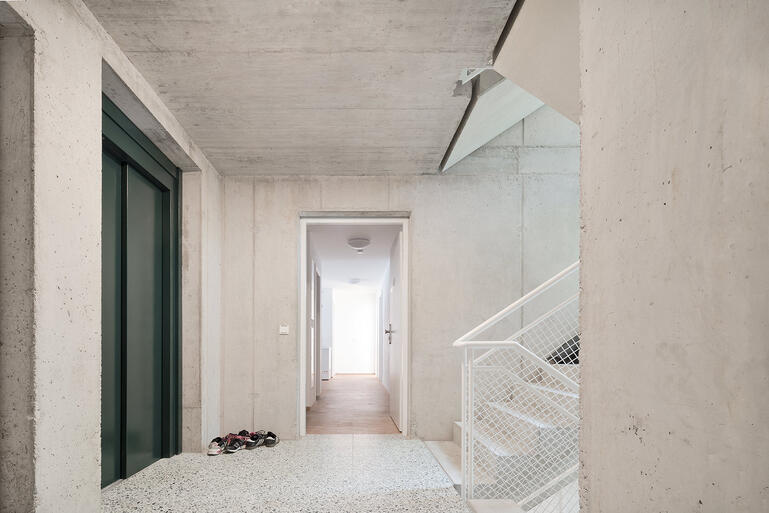
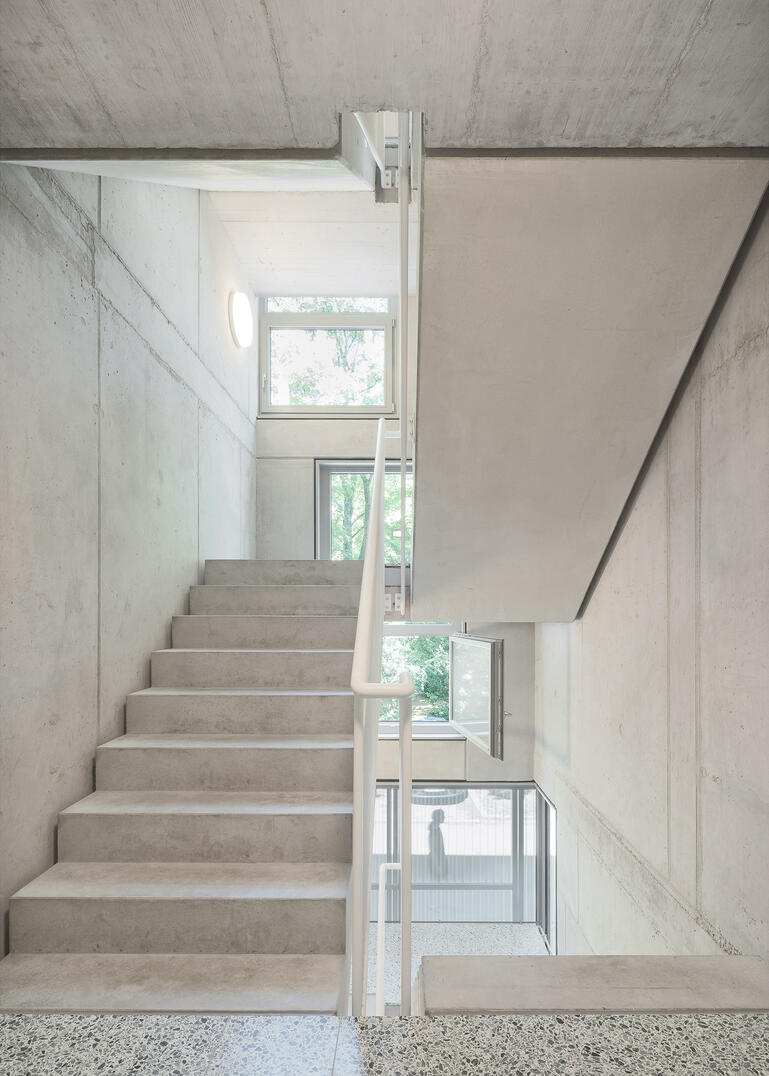
The extra-high, retracted entrance area conveys a spatial generosity already on arrival. Raw concrete, greenish terrazzo tiles and the white-painted railing set the atmospheric framework in the staircase between light elegance and robust hardness.
In the apartments, large, floor-to-ceiling openings in all rooms create a bright, friendly atmosphere and bring the lush old tree population in the north into the interior. Deep balconies are oriented towards the Neckar River and extend the apartments each with a fully-fledged open space. The light, wavy, white dress of the balustrades creates both privacy and views thanks to the fine perforation of the sheet metal.
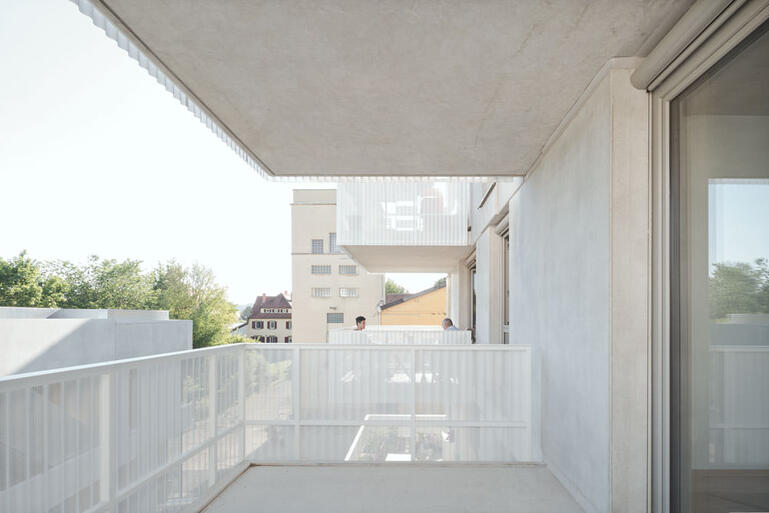
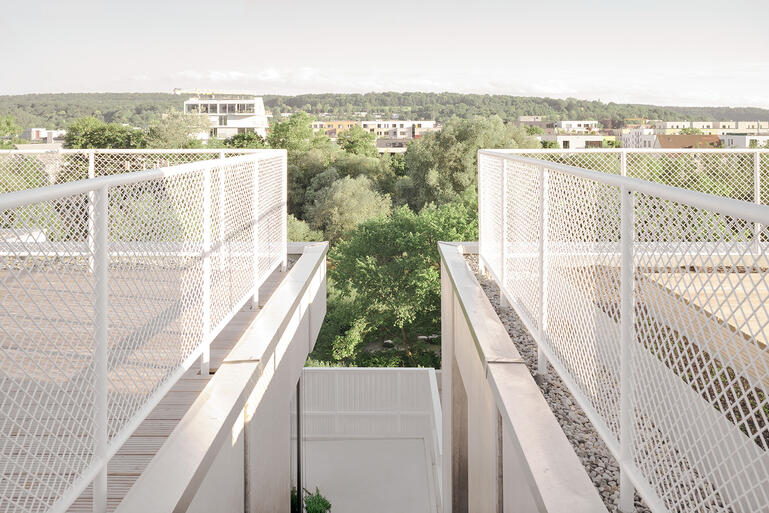
Only the roof terraces are reserved for the residents of the top floor. Otherwise, the usual hierarchy from unattractive street flats to luxury penthouses gives way to a sophisticated, egalitarian design principle in order to provide an appropriate architectural framework for living for all, which allows for a genuine coexistence of the most diverse groups of residents.
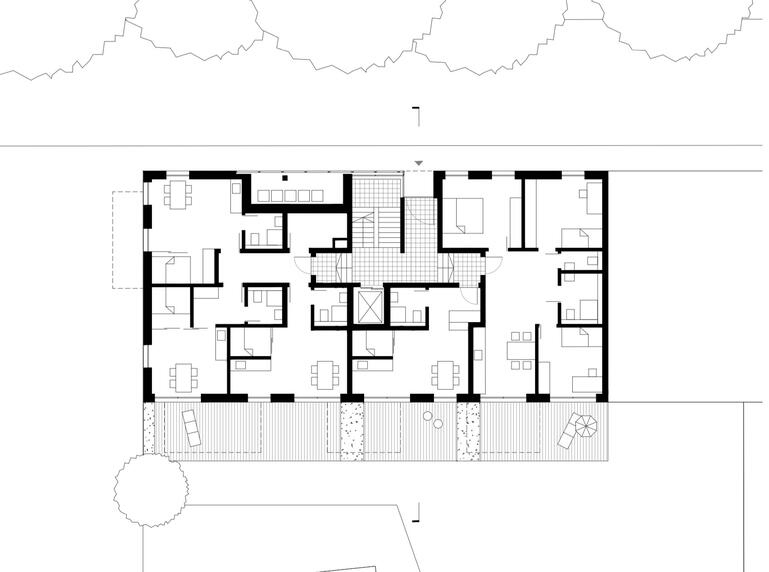
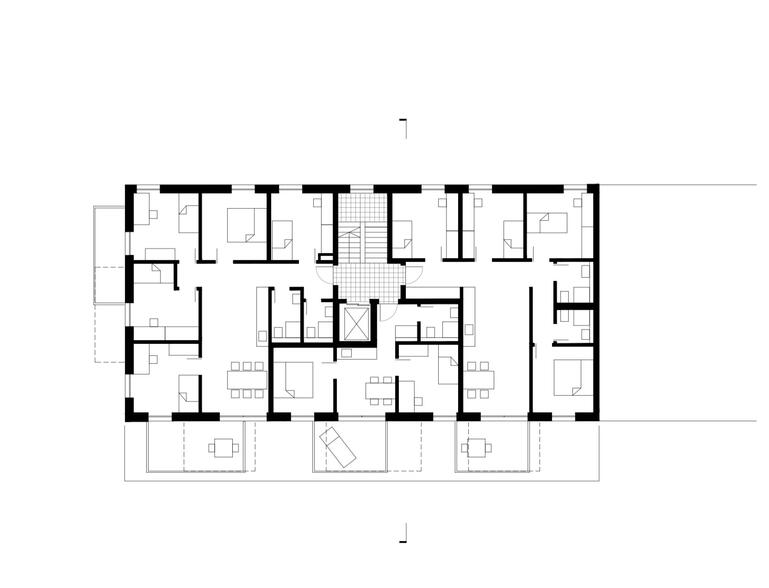
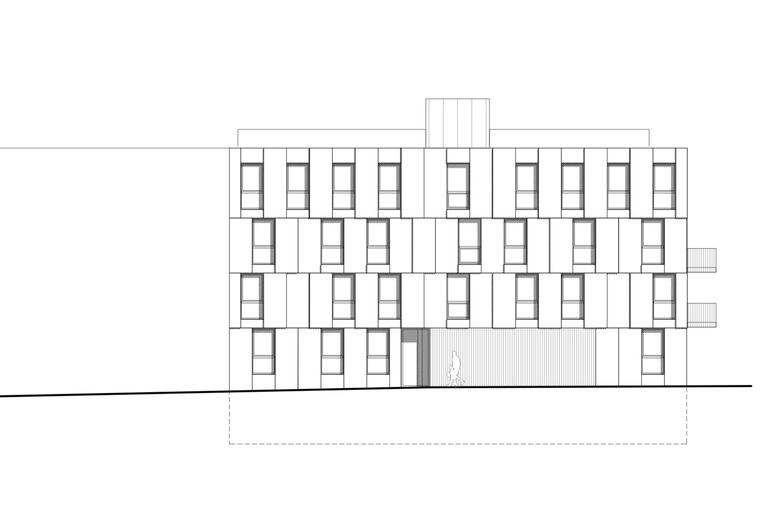
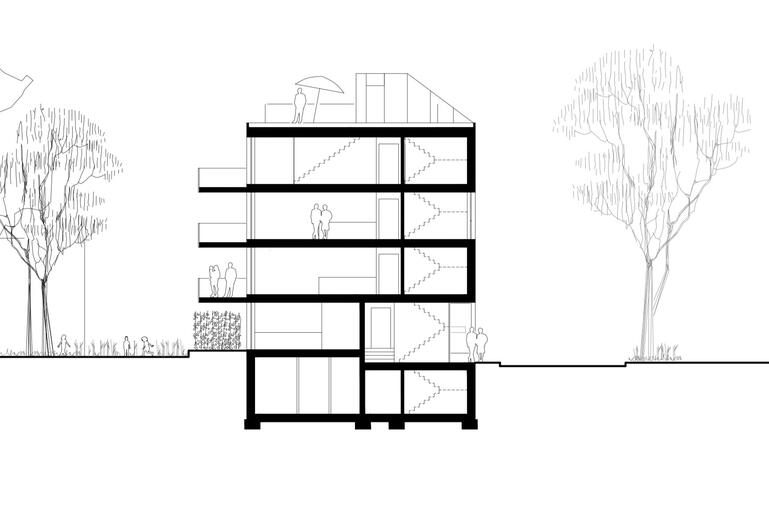
Project information
Location
Tübingen, Germany
Project status
completed
Team
Tobias Bochmann
Hadi Tandawardaja
Photography
Brigida González
Area
1000 m²
Period
2016 – 2019
Completion
Awards
Auszeichnung Beispielhaftes Bauen – Haus am Park Tübingen
Publications
Links
- Geflüchtete und Penthouse-Bewohner unter einem Dach, Stuttgarter Zeitung
- Gelungene Verbindungen - Wohnhaus in Tübingen, db bauzeitung
- Wo Vielfalt floriert: Wohnprojekt von Yonder und Somaa, detail.de
- Haus am Park – Wohnen für Alle, polis-award
- Ambitionierte Agenda - Integratives Wohnprojekt von Yonder + SOMAA in Tübingen, Baunetz
- Bunte Mischung, swiss-architects.com
- Haus am Park, competitionline
- Integratives, partizipatives und adaptives Wohnen für Alle, bundesstiftung-baukultur.de
- Betonrelief Haus am Park, beton.org
- Wohnen einmal anders! – Wohnen in Gemeinschaft, Baukultur Nordrhein Westfalen
- Housing For All / Yonder – Architektur und Design + SOMAA, ArchDaily
